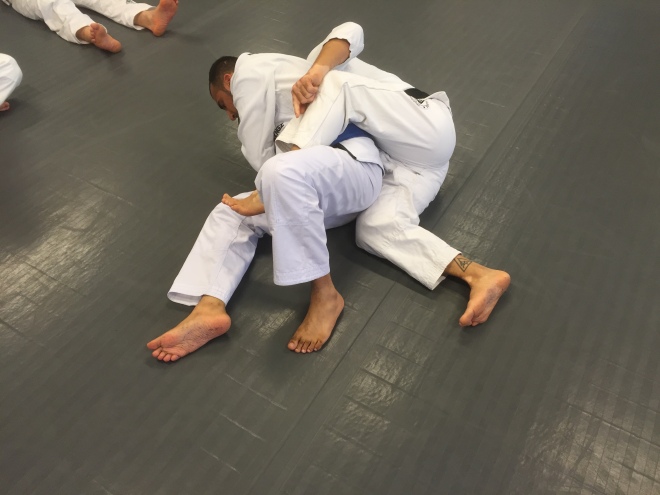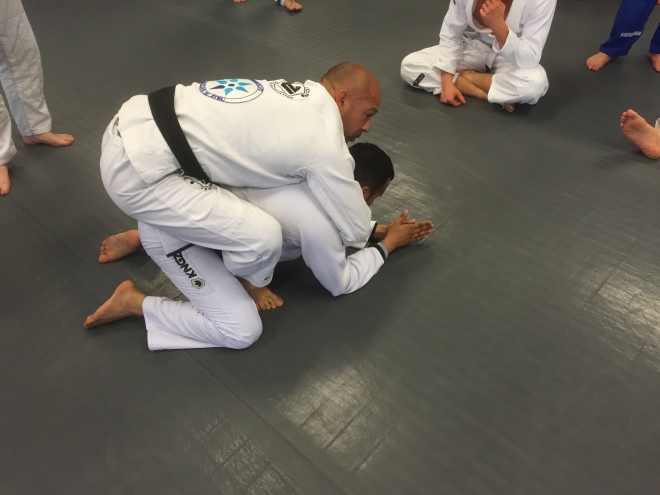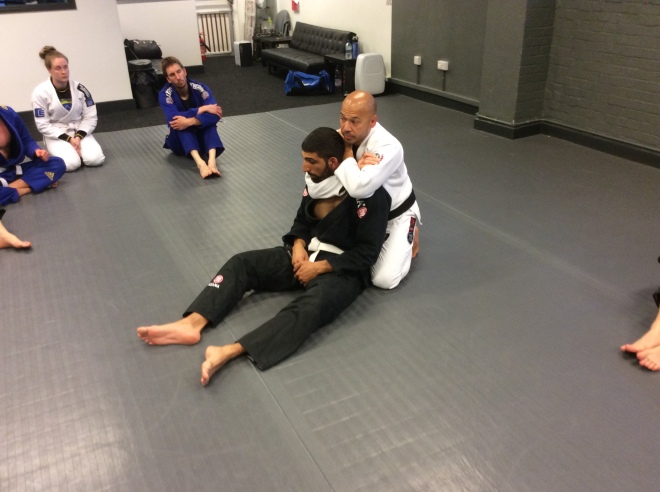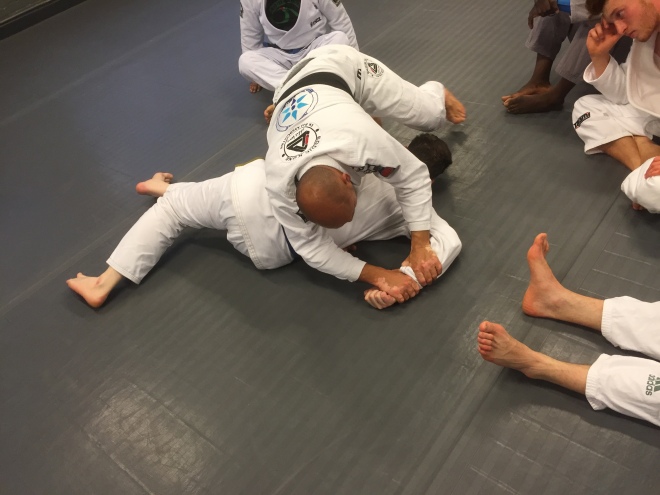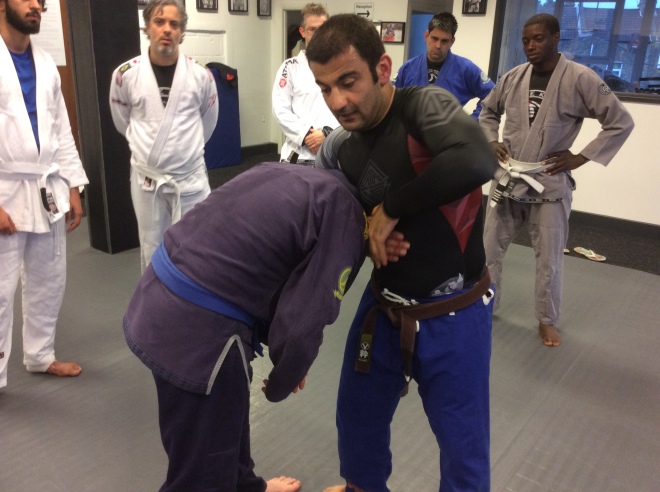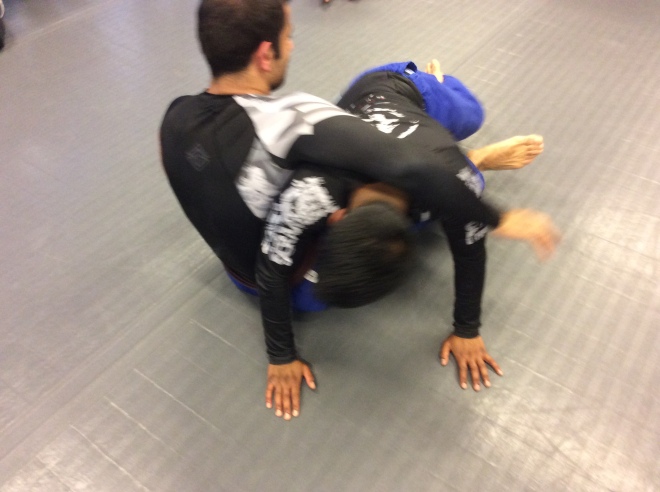Author: wbp1s
Easy does it now…
So, after giving my back much needed down time from the rigours of jiu-jitsu. I ventured back on to the mats to see where the class had progressed too in my absence.
The new class structure is still in place, with fundamentals for the first hour then moving into more intermediate/advanced techniques at the end. However, this week the focus has been on self defence positions when caught in a bear hug from the rear.
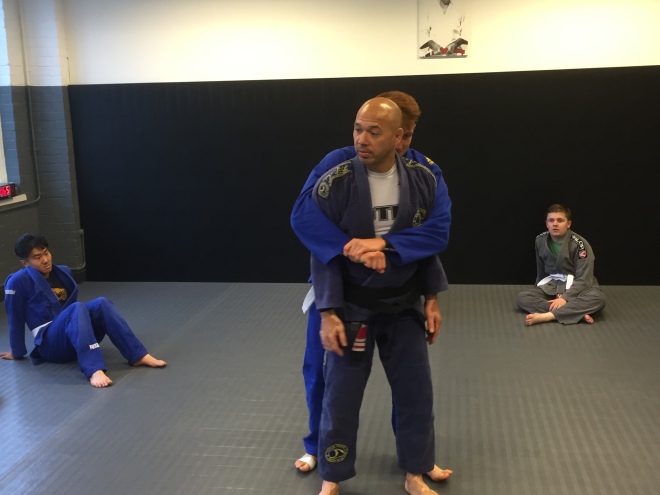
Professor made it clear, as always, what we would be going through for the evening and also what we would be recapping from the previous lesson.
To start off we did a few guard passing drills involving manipulation of the gi collar and the gi pants, to offset your opponent to get into a side/cross body position.
We then moved into recapping the lesson from Monday involving the positions for doing a take down if you’re grabbed from behind. Professor was sure to remind us that this particular variant was only applicable to people of a similar size to yourself. If they happened to be a lot larger, for example a bouncer in a club, then a different technique would need to be used.
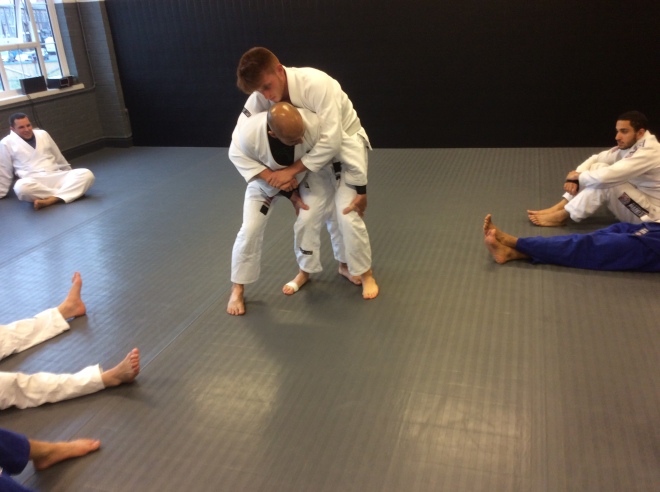
Professor’s observations saw that the technique to throwing them wasn’t correct and reiterated in the areas we weren’t grasping. Maintaining good base, pushing the legs together and using legs and throwing them across our back and not behind us.
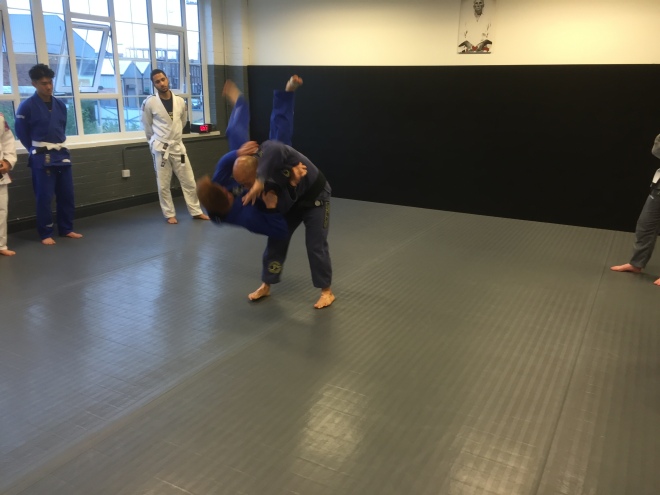
We then, revisited a position involving a head lock attempt, good posture is performed and we end up in a situation where we are doing the basic defence, but mid way through the attacker moves their arm and we end up behind them.
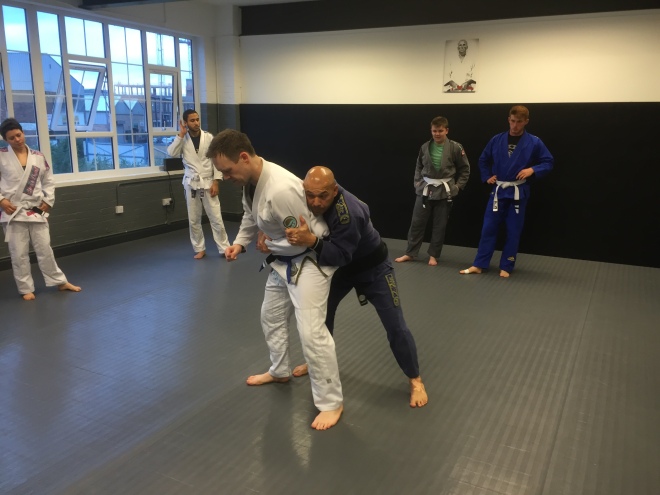
From here driving the attacker forwards, triggers a reaction from them to stop being pushed, it is at this moment we instigate a take down from behind to then move into modified mount over them.
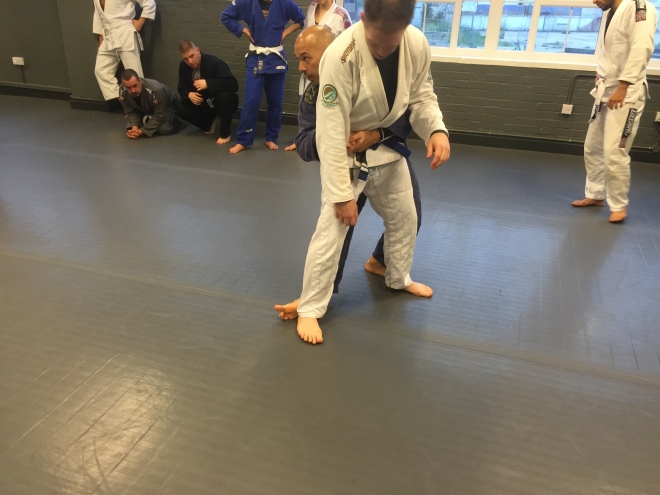
After practising this numerous times and with the added technical details being explained, Professor then asked if there were any options for the person being thrown. There was one, normally suited more to MMA fighters but nevertheless it could still happen in a street fight. The attack tries to negate the throw by leaving forwards.
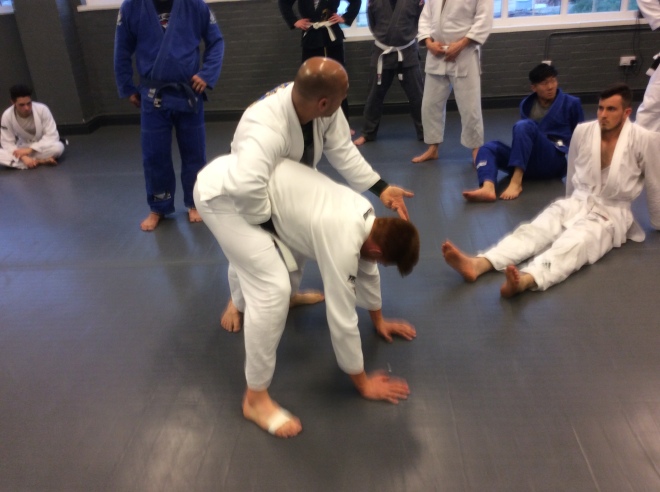
From here, Professor explained it’s advisable to move to the side and apply pressure from the hip into their side to keep the attackers hands on the floor. Once this is done, we can hook the nearest leg with an inside leg hook and pull the leg with the hooking leg and apply pressure diagonally towards the opposite shoulder to force the attacker to the ground.
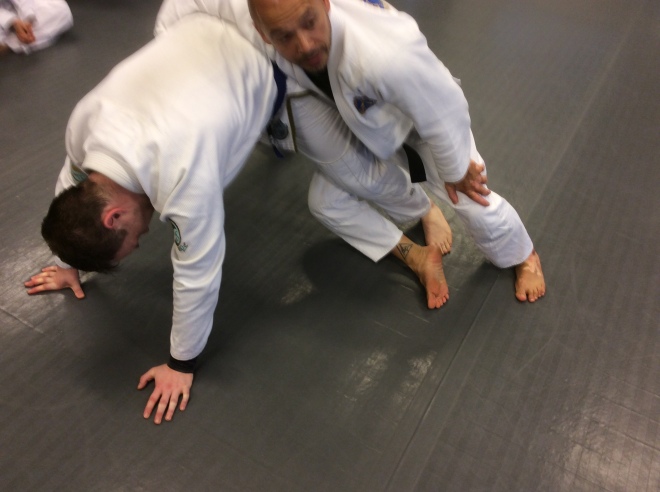
From here moving your way up towards the head maintaining pressure all the way. Another scenario given was if the person drops to their knees? Again it was a simple solution, maintain the connection with them and use your leg to hook the knee and again push them, via your hip, into the direction of their opposite shoulder.
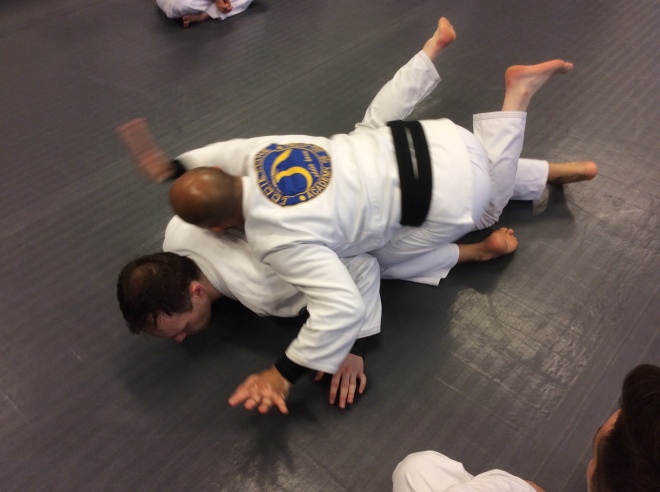
The last discussion point on this position, spoke more about if they were in a fully closed ‘turtle’ position. After throwing it out to the congregation on the evening, Professor put us out of our misery and simply explained that we can roll them over using leverage. This then descended us all into a lecture about various aspects of jui-jitsu. That concluded the lesson for the evening.
My thoughts..
It appears i may have missed a fair amount, but the concepts are already formulating in my mind as i continue my journey. Sparring sessions were a lot harder than normal due to my apparent dip in stamina. But it was also good to see people executing moves like a seasoned pro. Will look forward to sparring with them in the near future.
Tapping out…
Arghh! my back!
Title says it all, since my last postings on the wonders of Kimura arm-locks, i’ve managed to do the thing that most people do in training and that’s injure themselves, or in this case I’ve injured myself.
So what did i do?
During a simple warm up exercise i managed to hurt my lower back, not terribly serious, but when the following day comes and you can’t even put your shoes and socks on without screaming in pain? you know this won’t get easier any time soon. Luckily, or unluckily, i’m not a stranger to injuries so i know that the first point of call isn’t your local GP, it’s a specialist that knows about lower back pain, i.e. an Osteopath. But before we get to that point, i was helped out by a member of the academy who also went through this themselves and helped me stretch my lower back out a bit, no it wasn’t pleasant!
Later that particular evening a very hot bath to try and relax the muscles in the area, which helped slightly. Gingerly getting into bed and the fighting for hours to find a reasonably comfortable position to sleep in. I don’t recommend lying flat on your front or on your back. The following day comes and disaster already struck! I’m on my back. I attempt to sit up and quickly lie back down again, my back in telling me things… don’t try to sit directly up! I manage to roll out of bed and come to my knees. It feels like my back doesn’t understand the concept of movement. So i grit the teeth and slowly come up straight, even though still slightly stooped.
Dressing myself was a challenge, i.e. putting on trousers, socks, etc. Getting to work was generally unpleasant. Sitting at a desk to operate a pc, yeah that didn’t go down well, considering every time i got up was recipe for disaster. A colleague gave me a contact number for a local Osteopath in the area, which he recommended very highly, so i dutifully made an appointment.
After answering all the normal questions, you do on a first visit, it was time to strip then get on the table. The hour flew by… crack, crack, crack, crack… crack some more. No training for the week, ice the back to reduce swelling, do not sleep on your front or back, sleep on your side with a pillow between the knees. Plus the Osteopath put these strips on my back, why? apparently it helps blood flow to the area.
Days past, movement is coming back, pain still there but I’m moving better. Decided to have another assessment done, as i really want to get back to training, went and saw the Osteopath, another series of cracks and checks. Confirmation, my back is a lot more responsive and feels like there’s some give in places as before there wasn’t any. Warned me of going back to training and to take it easy, otherwise i can undo all the healing that’s been done. For good measure they cracked the sh1t! out of my neck too and my upper back. (I really do think that back cracking is like ‘popping your cherry’ for Osteopath’s)
But my range of movement is a lot better now and next to no pain. I will now look forward to going back to training, but no high impact stuff. Being injured isn’t cheap!
“Tapping out!”
I’m ready to tell you my secret now. I see Kimura arm-locks!
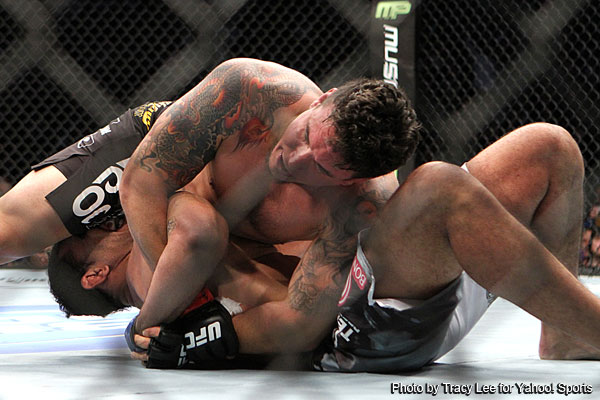
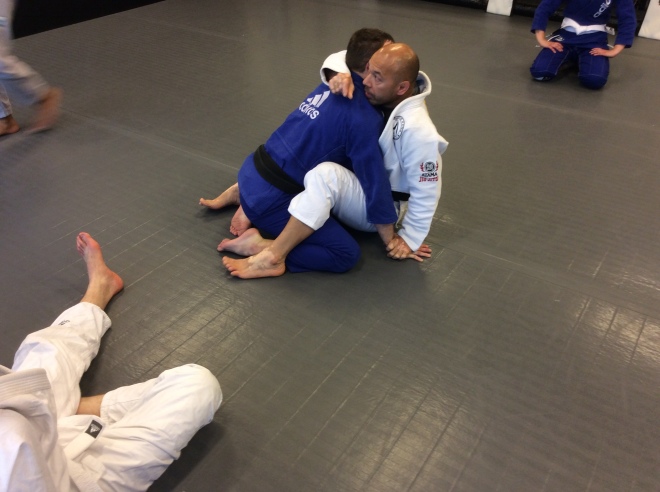
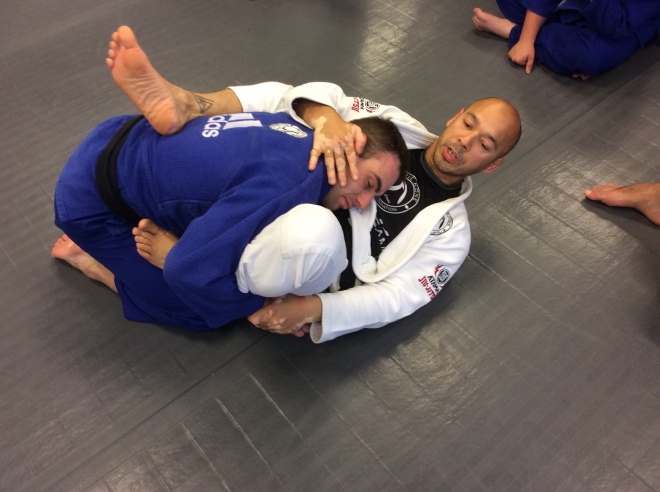
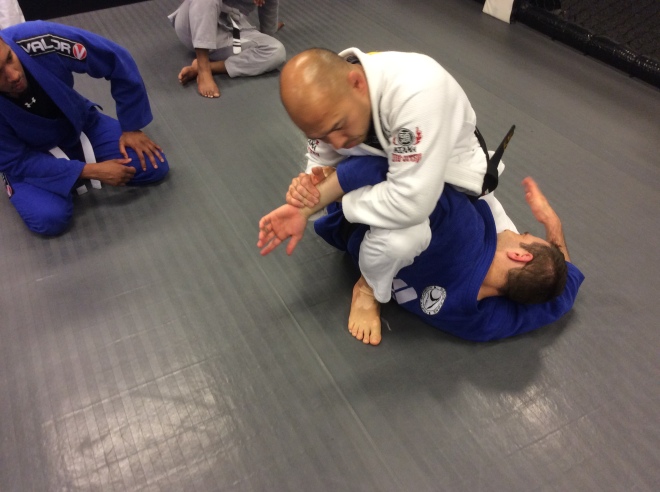
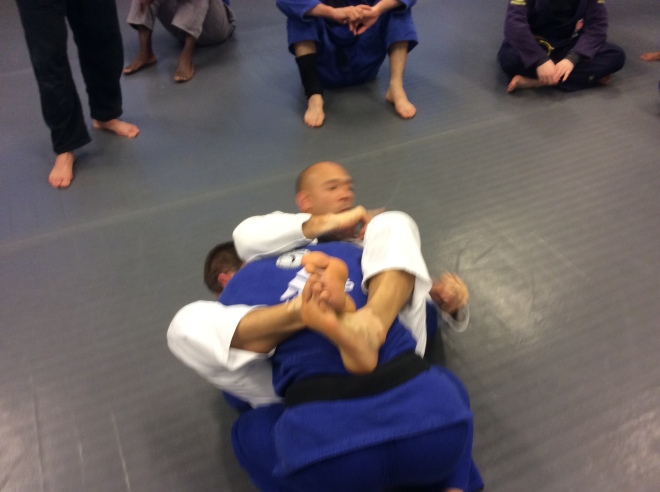
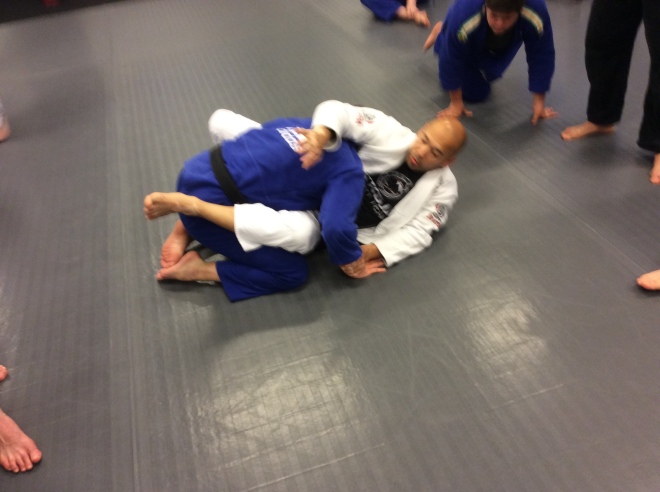
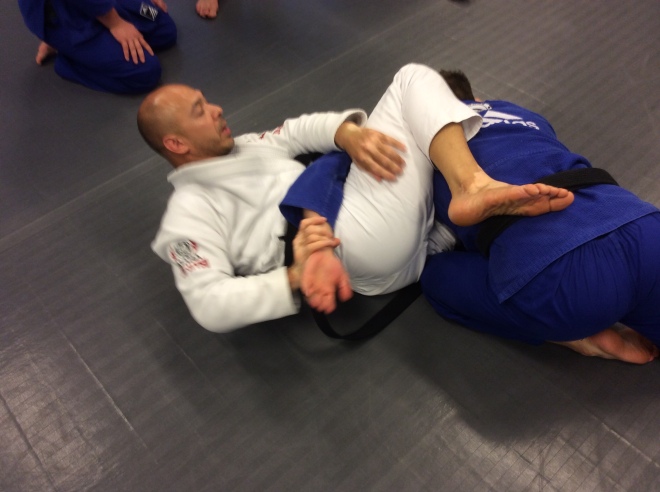
Sore shoulders and a sore neck
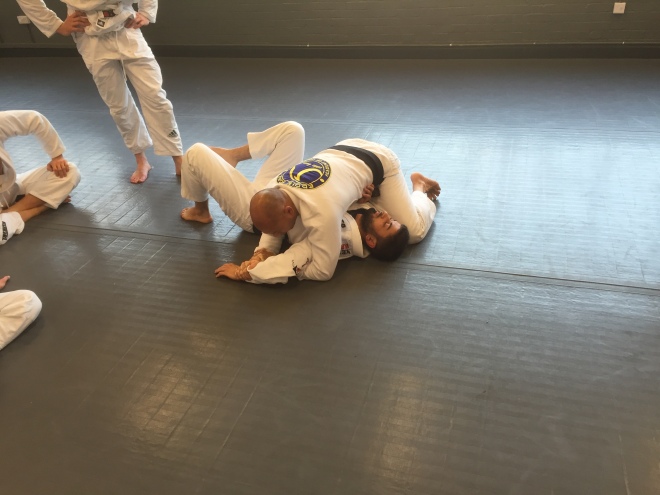
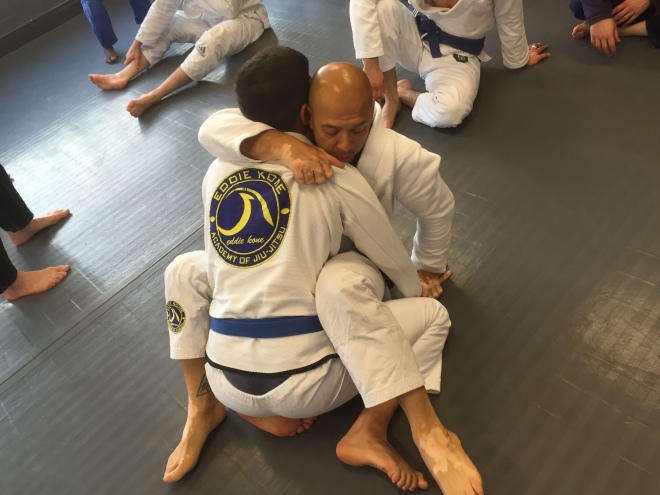
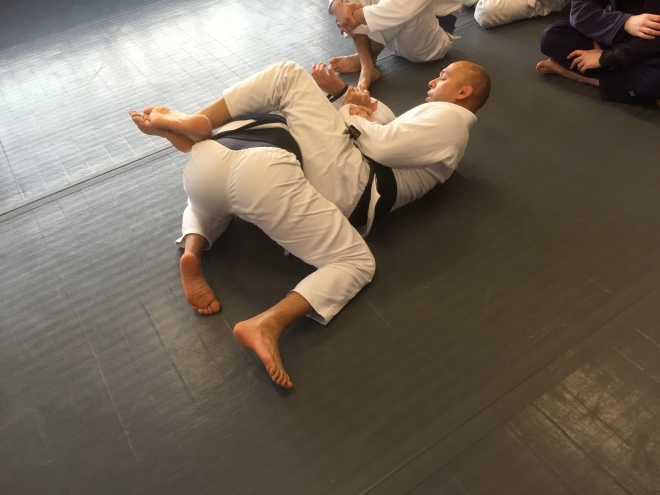
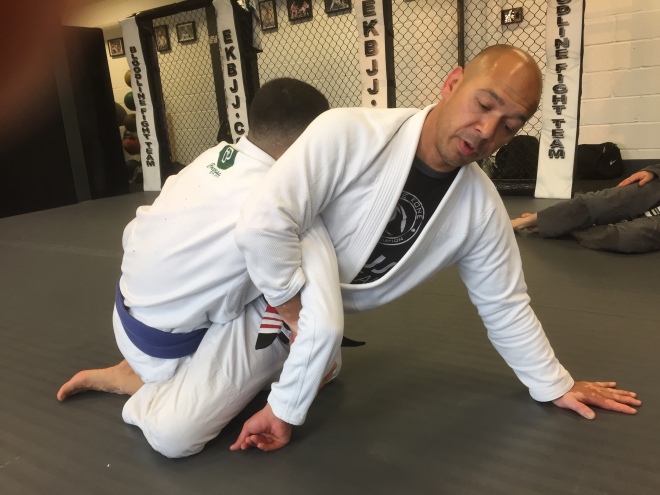
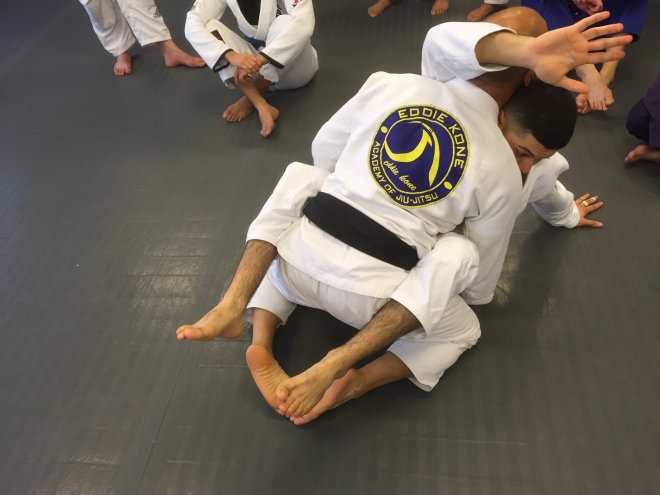
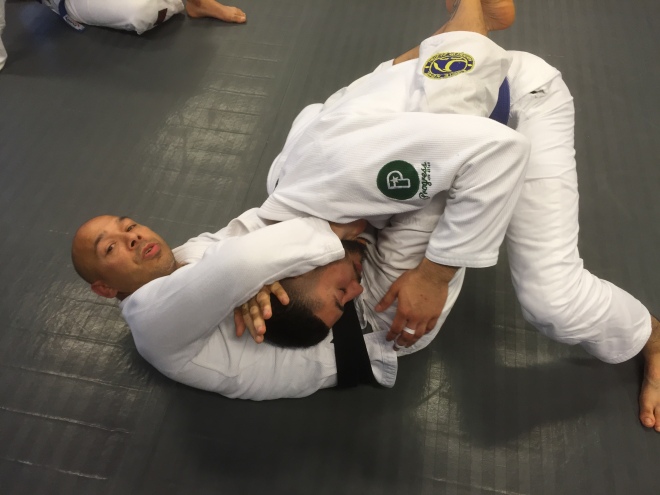
Tools of the Gracie hunter…
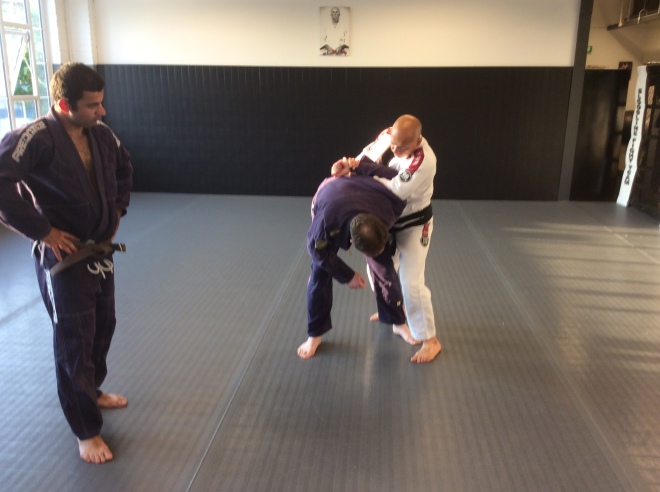
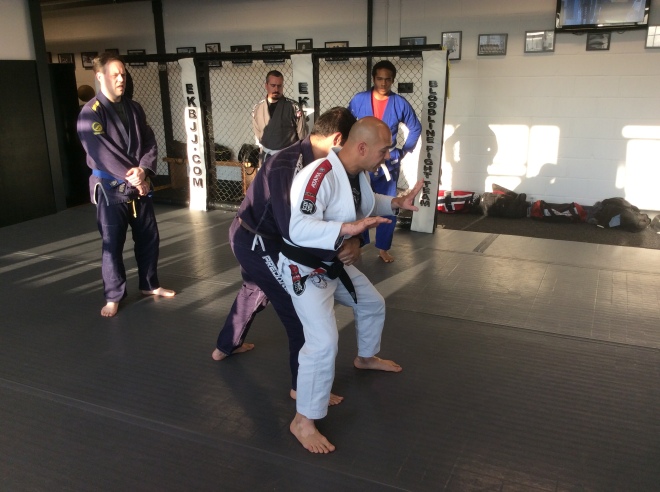
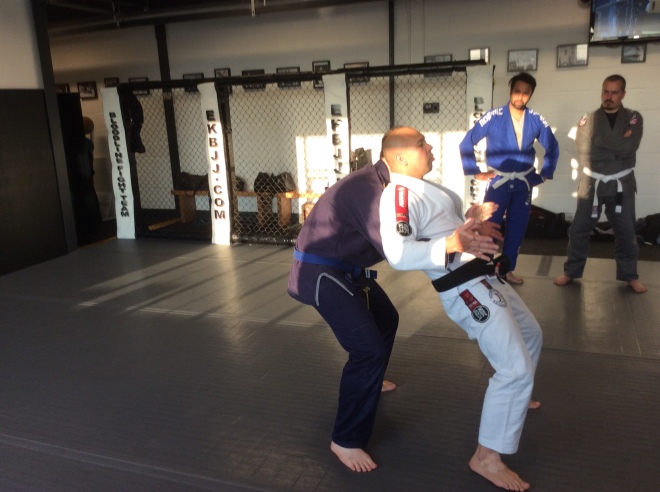
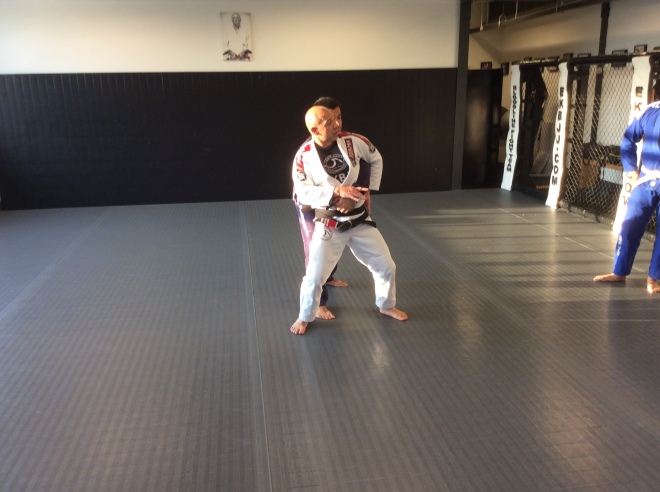
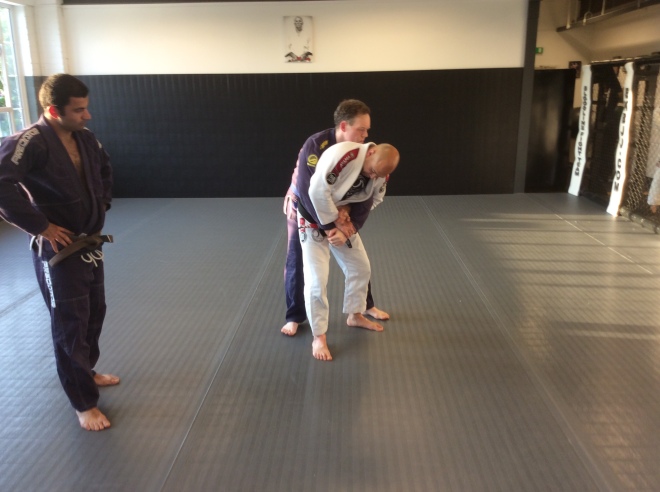
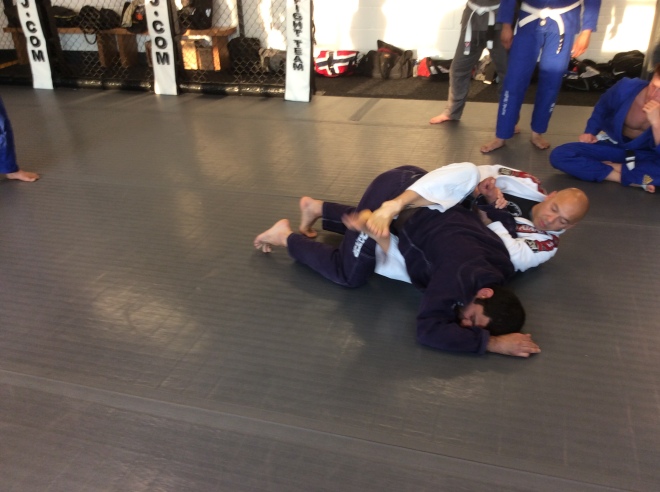
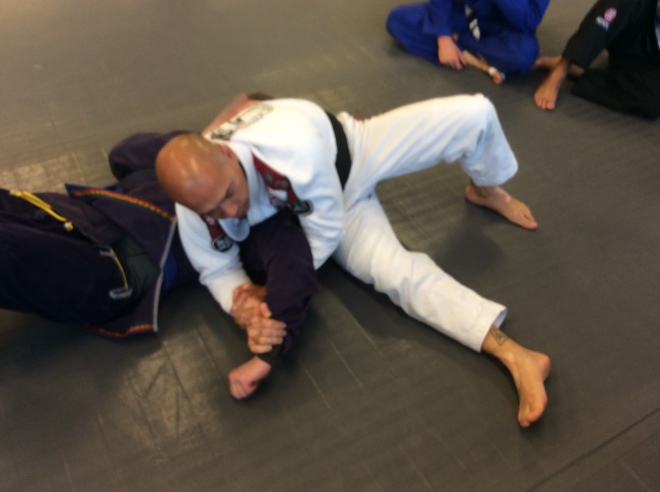
The power of hips!
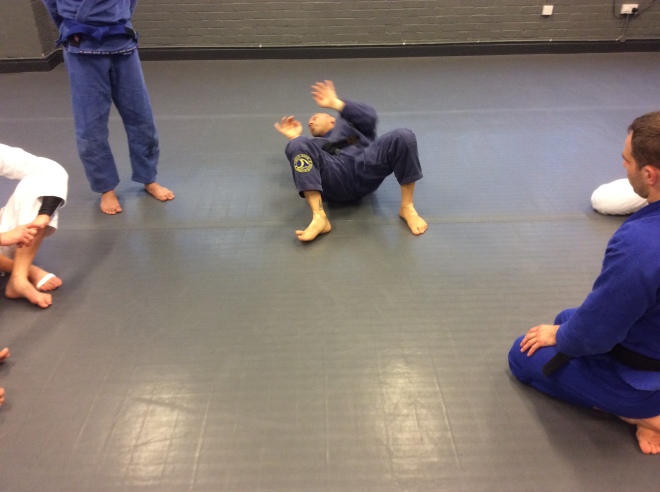
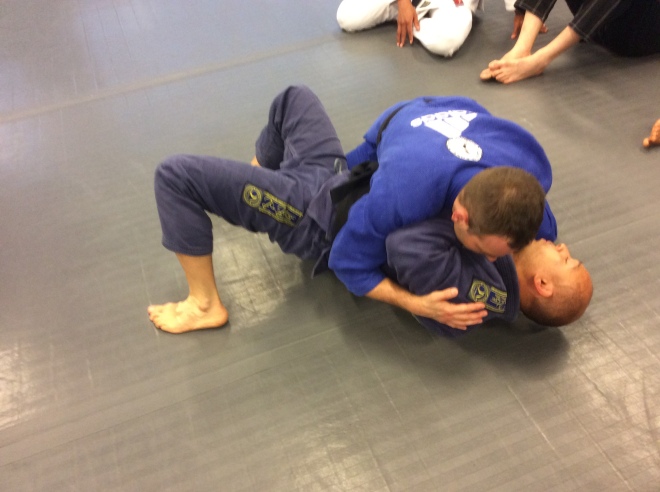
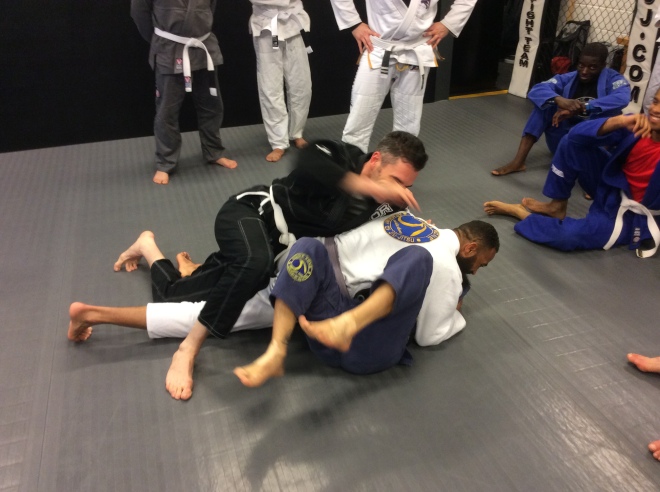
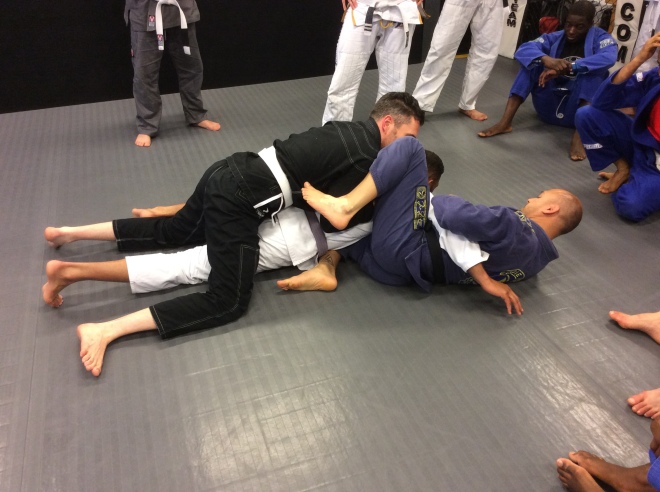
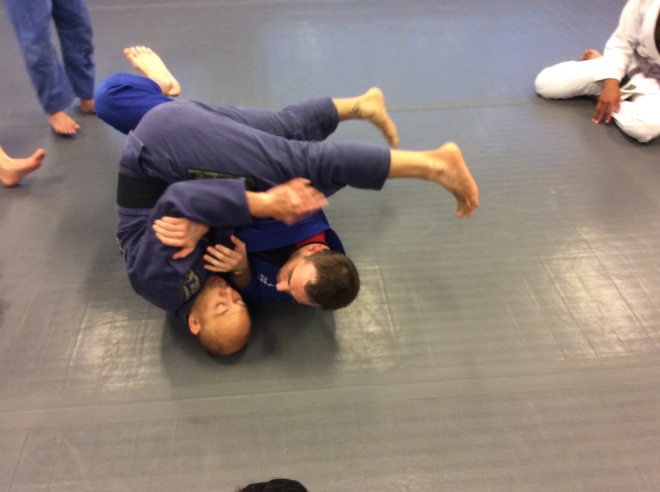
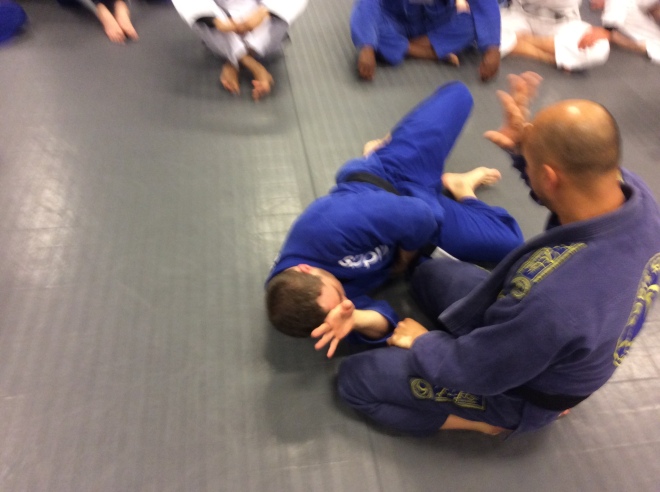
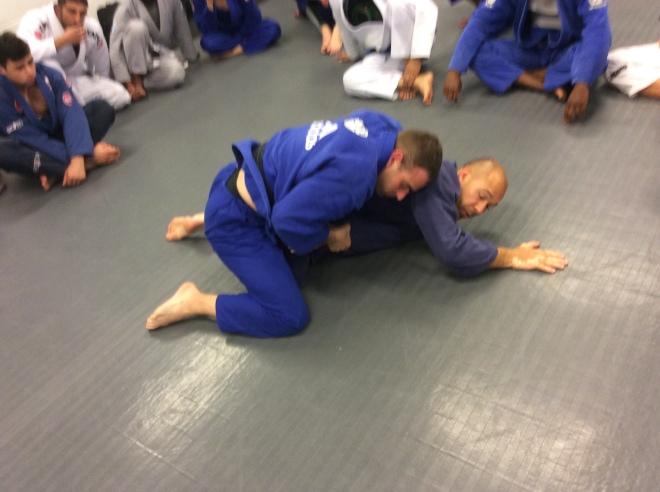
From one master to another…
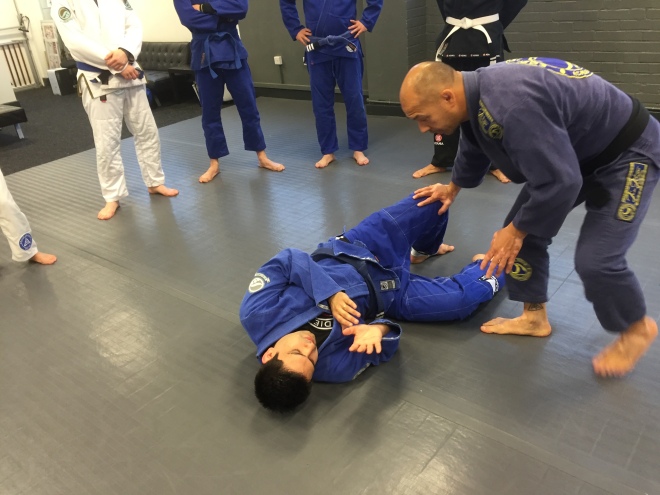
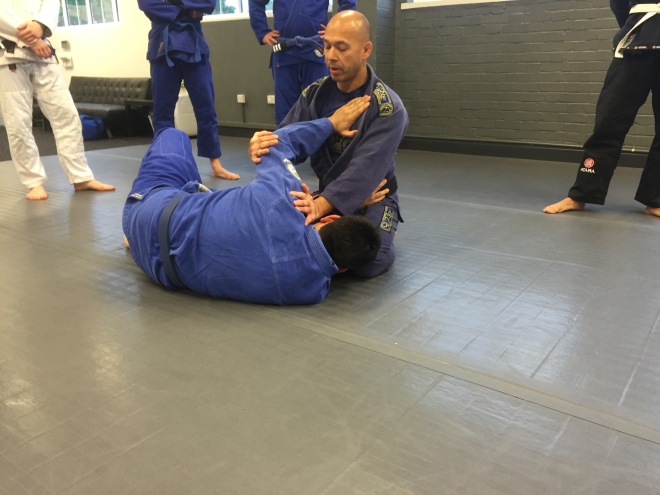
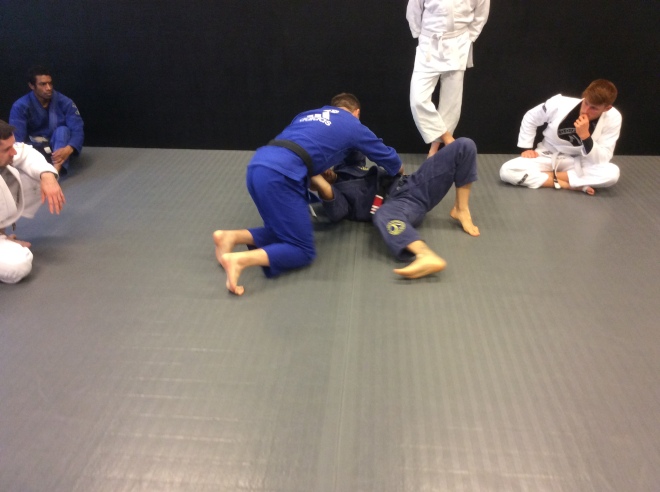
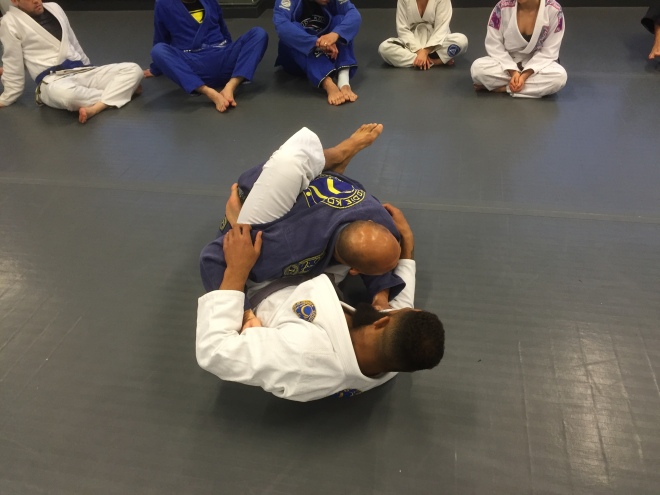
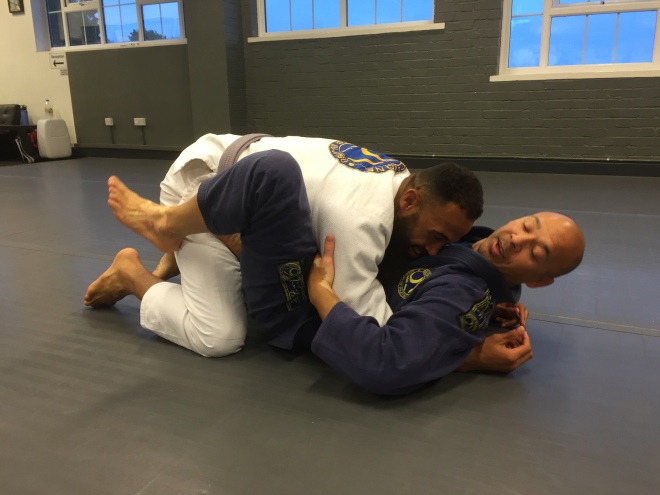
Learning from the Master
Seeing double?
